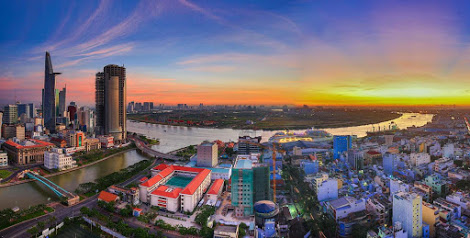Communist Countries in the World – Vietnam (Socialist Republic of Vietnam) – Part 05 of 07


There is a government travel restriction for this destination related to coronavirus (COVID-19).
.
.
A List of Current Communist Countries in the World
:max_bytes(150000):strip_icc():format(webp)/communist-countries-overview-1435178_FINAL2-2d1932314ea14f93904d11691cef8bb1.png)
Thought Co / Melissa Ling
.

During the time of the Soviet Union (1922–1991), communist countries could be found in Eastern Europe, Asia, and Africa. Some of these nations, like the People’s Republic of China, were (and still are) global players in their own right. Other communist countries, such as East Germany, were essentially satellites of the U.S.S.R. that played a significant role during the Cold War but no longer exist.
Communism is both a political system and an economic one. In politics, communist parties have absolute power over governance, and elections are single-party affairs. In economics, the party controls the country’s economic system, and private ownership is illegal, although this facet of communist rule has changed in some countries like China.
By contrast, socialist nations are generally democratic with multi-party political systems. A socialist party does not have to be in power for socialist principles—such as a strong social safety net and government ownership of key industries and infrastructure—to be part of a nation’s domestic agenda. Unlike communism, private ownership is encouraged in most socialist nations.
The basic principles of communism were articulated in the mid-1800s by Karl Marx and Friedrich Engels, two German economic and political philosophers. But it wasn’t until the Russian Revolution of 1917 that a communist nation—the Soviet Union—was born. By the middle of the 20th century, it appeared that communism could supersede democracy as the dominant political and economic ideology. Yet today, only five communist countries remain in the world.
.

Vietnam (Socialist Republic of Vietnam)
:max_bytes(150000):strip_icc():format(webp)/VietnamFlag-58b9cddd3df78c353c3848f1.jpg)
Vietnam was partitioned at a 1954 conference that followed the First Indochina War. While the partition was supposed to be temporary, North Vietnam became communist and was supported by the Soviet Union while South Vietnam became democratic and was supported by the United States.
Following two decades of war, the two parts of Vietnam were unified, and in 1976, Vietnam as a unified country became communist. Like other communist countries, Vietnam has, in recent decades, moved toward a market economy that has seen some of its socialist ideals supplanted by capitalism.
The U.S. normalized relations with Vietnam in 1995 under then-president Bill Clinton.
.
NEXT:
Countries With Ruling Communist Parties
:max_bytes(150000):strip_icc():format(webp)/NepalFlag-58b9cdd95f9b58af5ca7d050.jpg)


SIGN UP TO RECEIVE OUR EMAILThe most important news of the day about the ASEAN Countries and the world in one email: [email protected]
.










